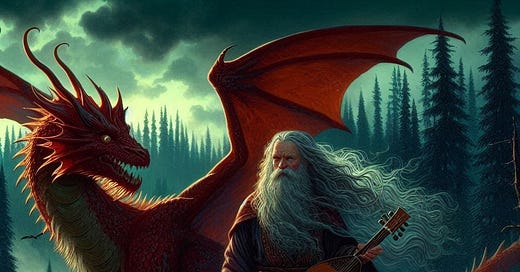Kalevala is Finland’s national epic. Its poems of creation, magic, lust, violence, and death influenced Tolkien’s Middle Earth. These days, it’s drawing parallels with Finland’s quantum ecosystem.
Finland’s national quantum institute, InstituteQ, published a 31-page report on Finland’s quantum workforce on April 14, aka World Quantum Day. The report makes recommendations to policymakers, quantum technology developers, quantum technology end users, and higher education institutions. “The Quantum Science and Technology Workforce in Finland 2035” doesn’t mention Kalevala, but Kalevala could’ve been an intriguing theme.
Status Reports
The report is partially a status report on the Finnish quantum workforce and includes appropriate charts and figures. Kalevala contains a series of “status reports,” in the sense that the narrative regularly summarizes current events, including progress made, setbacks endured, and challenges remaining.
Growth Trends
The report is chock full of charts and figures that forecast growth over the next decade. The workforce is expected to grow from ~1,550 today to 4,200 by 2035, with a corresponding growth in training volume of 150 per year in 2024 to 250 per year from 2030-2035. Although Kalevala does not contain linear graphs, it does contain cyclical growth patterns of gain and loss. This cyclical growth is multifaceted, leading to unpredicted breakthroughs in insights and abilities.
Attracting Investments
The report hopes to attract investments to Finland. Kalevala includes the pre-quest pooling of resources, blessings, and loyalty, as well as the sharing of risk. In lieu of a pitch deck, the protagonist offers a mesmerizing narrative presenting a shared vision.
Education
The report hopes to strengthen the ecosystem through education. Kalevala’s protagonists undergo lifelong experiential learning through trials, mentorship, and self-discovery. The epic itself draws from oral tradition, using repetitive recitation to pass knowledge down through the generations. The storytelling encompasses instruction, morality, history, and culture, shaping Finnish identity and wisdom like an educational system. Facts, however, are de-emphasized in favor of experience, intuition, critical thinking, and real-time adaptation.
Retraining
The report stresses the need to retrain workers from adjacent fields. Kalevala challenges the protagonists in various ways, forcing them to adapt, relearn, and retool. Success depends on combining wisdom with new insights and pivoting around these obstacles. The obstacles may not even be static, thus forcing the protagonists to update their methods as dynamic challenges evolve.
Attracting Talent
The report hopes to attract talent to Finland. For one of his quests, Kalevala’s protagonist assembles a multi-talented team, orchestrating members’ strengths to overcome obstacles. Kalevala also includes the formation of alliances, which involves the recruitment of heroes with needed abilities.
Developing Skills
The report recognizes the need for new skill development. Kalevala includes characters that start off incomplete and develop skills or master crafts though trial and error, practice and refinement, and even divine guidance. At least one of the timelines is measured in years. An underlying theme of the epic is that challenges are opportunities to grow, and that life is a continuous journey of challenges and growth.
Assessing Needs
The report assesses Finland’s workforce needs for the next ten years and makes recommendations for (re)training and recruitment. Essentially, the goal is to repeat Finland’s successes with other groups and apply that model to quantum technologies. Although Kalevala doesn’t include a written report, it has an underlying theme of mission assessment. There is an understanding of what a quest requires, which typically means a qualitative, diverse, and balanced force.
Conclusion
If Finland’s program parallels an epic poem, does that make it an epic program? I think so. The protagonists need to determine how many quantum heroes are already present, including those in adjacent fields. Who are they, where do they come from, and what are their strengths? Which heroes are needed? What will the next generation of heroes look like and where will they come from? “The Quantum Science and Technology Workforce in Finland 2035” is, appropriately, a tale of creation—ecosystem creation.
Interestingly, Kalevala includes a quantum computer analogue. The Sampo is like a Horn of Plenty, capable of creating grains, gold, and other resources. It starts off as a legend steeped in hype, which ought to sound familiar. The good news is that it eventually lives up to the hype. The bad news is that it gets destroyed. The fantastic news is WHY it gets destroyed, remembering that this is an epic poem about creation. I’m not going to spoil it for you, but it’s The Quantum Dragon’s new favorite bedtime story.
Although InstituteQ’s focus is mostly local, there is the hope that this report will benefit quantum ecosystems across Europe and around the world. My hope is that the report benefits you professionally, and that Kalevala benefits you personally.
Image generated by an AI model provided by Microsoft Copilot.





